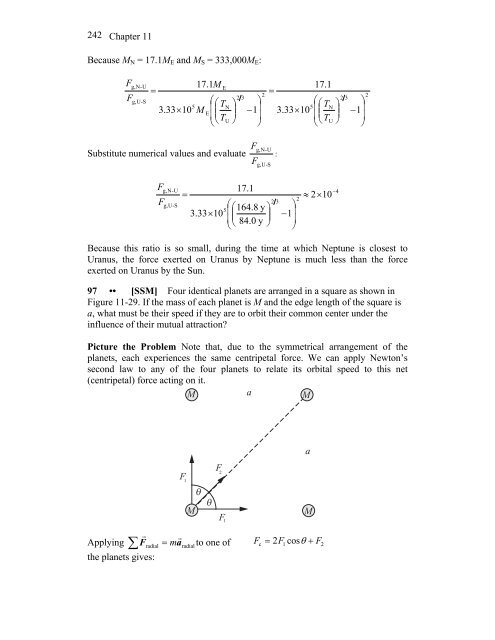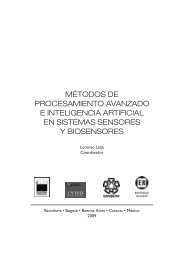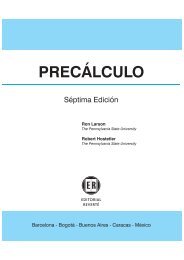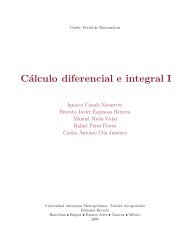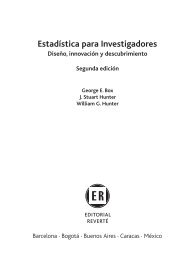Chapter 11 Gravity
Chapter 11 Gravity
Chapter 11 Gravity
You also want an ePaper? Increase the reach of your titles
YUMPU automatically turns print PDFs into web optimized ePapers that Google loves.
242<br />
<strong>Chapter</strong> <strong>11</strong><br />
Because MN = 17.1ME and MS = 333,000ME:<br />
F<br />
F<br />
g, N-U<br />
g, U-S<br />
=<br />
5<br />
3.<br />
33×<br />
10 M<br />
17.<br />
1M<br />
E<br />
E<br />
⎛<br />
⎜⎛<br />
T<br />
⎜ ⎜<br />
⎝⎝<br />
T<br />
N<br />
U<br />
⎞<br />
⎟<br />
⎠<br />
2 3<br />
Substitute numerical values and evaluate<br />
F<br />
g, N-U<br />
F<br />
g, U-S<br />
⎞<br />
−1⎟<br />
⎟<br />
⎠<br />
F<br />
2<br />
g, N-U<br />
F<br />
g, U-S<br />
17.<br />
1<br />
=<br />
⎛<br />
5 N<br />
3.<br />
33 10 ⎜⎛<br />
T ⎞<br />
×<br />
⎜ ⎜<br />
⎟<br />
U ⎝⎝<br />
T ⎠<br />
17. 1<br />
−4<br />
=<br />
≈ 2×<br />
10<br />
2 3<br />
2<br />
⎛<br />
5 164.<br />
8 y ⎞<br />
3.<br />
33 10 ⎜⎛<br />
⎞<br />
× ⎜ ⎟ −1⎟<br />
⎜ 84.<br />
0 y ⎟<br />
⎝⎝<br />
⎠ ⎠<br />
:<br />
2 3<br />
⎞<br />
−1⎟<br />
⎟<br />
⎠<br />
Because this ratio is so small, during the time at which Neptune is closest to<br />
Uranus, the force exerted on Uranus by Neptune is much less than the force<br />
exerted on Uranus by the Sun.<br />
97 •• [SSM] Four identical planets are arranged in a square as shown in<br />
Figure <strong>11</strong>-29. If the mass of each planet is M and the edge length of the square is<br />
a, what must be their speed if they are to orbit their common center under the<br />
influence of their mutual attraction?<br />
Picture the Problem Note that, due to the symmetrical arrangement of the<br />
planets, each experiences the same centripetal force. We can apply Newton’s<br />
second law to any of the four planets to relate its orbital speed to this net<br />
(centripetal) force acting on it.<br />
M a<br />
M<br />
∑<br />
r<br />
F<br />
F<br />
r<br />
= ma<br />
1<br />
M<br />
Applying radial radial<br />
the planets gives:<br />
θ<br />
θ<br />
F<br />
2<br />
F<br />
1<br />
to one of<br />
c<br />
1<br />
a<br />
M<br />
F = 2F cosθ<br />
+ F<br />
2<br />
2


